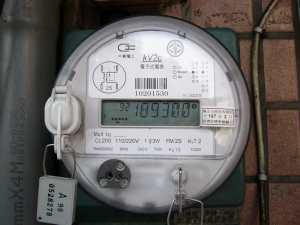What is net metering?
Net metering is a mechanism by which credits for the electricity generated by a solar power system during the day are traded for consumption of electricity from the main power grid at night, when your system is not generating power. For example, imagine you have already installed a solar PV system on the roof of your home and your home is typically unoccupied during the day when everyone is at work or school. Because you're not there watching TV or playing Xbox or drying your hair or running a mitre saw, your solar power system is generating more power than your house is using. Now, this is where it gets exciting! At this point, your electricity meter, you know, that round thing on the side of your house, will begin to run in reverse. Backwards, even! Then, at night when you and the family are at home popping popcorn and settling in to watch a movie on Netflix, your meter is using up those daytime credits.

Remember, you are only billed for your "net" energy used during the billing period. So some months you will have used more power than your system generated and other months you will generate credits. If you sized your system to generate 100% of your electricity needs, then at the end of a year you will be somewhere near or or precisely breaking even. And you will have enjoyed free electricity all year!
Most states now have some form of net-metering and things are improving nationally. Electric utility companies may voluntarily offer net metering while others are compelled to do so under regulatory statutes. Because each state and most municipalities operate under different legislative and regulatory agendas, net metering programs can vary widely for solar power plant owners.
Here's a pretty handy explanation of how net metering works.
A Brief History of Net Metering
Before Net Metering the utility company was required by federal law to purchase the power you generatred with your renewable energy system. However, the law didn't say how much the utility company would have to pay you for the power your system generated. When you bought power from the grid you paid a retail price, for example $0.15 per kWh. If your renewable energy system produced more power then your home or business was consumming it would sell this power to the grid. The utilities were only paying the "avoided cost" or $0.01 to $0.02 per kWh. With numbers like that it is hard to justify a grid connected system.
With Net Meterng in place, the utility companies have to pay you the same retail price for the excess power your system generates.
This actually simplified the billing for the utility companies. It most cases if you have a digital meter they remove it and give you the older style meter that has dials on its face. The digital meters require special programming to understand the power you are selling to the grid. Some digital meters without this custom programming will not recognize the power flow change in direction. They will continue to count up, not down when you sell them power. The older style meters will all change direction when you sell power back to the grid.
Today, in mid-2014, digital electric meters are smarter and are able to read the electricity flowing in both directions and the entire process is being streamlined continually as both solar PV and metering technology advance.
